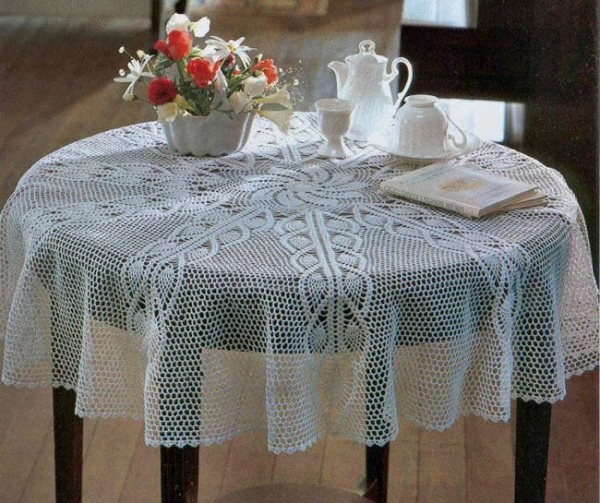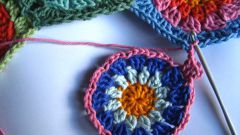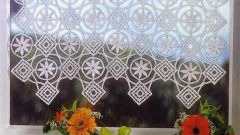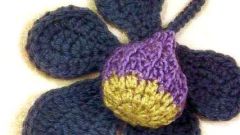Preparing for knitting
Before knit crochet cloth should be to determine exactly where it will be located. This depends on the size of the future product, its shape and color. Having determined this question, you need to pick the correct materials for the job.
Traditional cloths are knitted from cotton yarn in white, but to follow this rule is not required. So, colored heavy cloth, fine in tone, will decorate the massive table. And a small tablecloth knitted of bright colored thread, will revive a small coffee or bedside table.
To determine the size of the future product, you need to calculate the approximate consumption of thread. So, for a large tablecloth, you may need about a kilogram of yarn. Thread consumption depends on the size of the hook. Choosing the tool for the job, remember that a tightly knitted cloth holds its shape better, but a more loose knitting product will be less stringent and more elastic.
Crochet round tablecloth
Crochet round tablecloth starts from the center and continues around the circle until the end of the work. Creating a round tablecloth, and watch carefully so that the circle remained correct form without deformation. Round tablecloth should not take the form of a cone or "foldit", i.e. go in waves. Carefully follow the diagram and, if necessary, adjust the knitting right.
Crochet square or rectangular tablecloth
Square tablecloth you can knit from both the center and the edges, depending on the scheme you have chosen. Rectangular tablecloth to fit from the edge. The technique of square tablecloths round the same knitting: rows go from the center of round. Ends of knitting by tying the edge of the product.
Choosing the diagram of the edges of a square or rectangular tablecloths, keep in mind that it should contain a description of the trim angle to the knitting process.
Crochet table cloth made of fragments
Impressive look of the tablecloth associated of the individual elements connected to each other. The advantage of this method is that you can control the size and shape of the associated leaf as you complete and attach motives. The downside is that to dismiss such work will be much harder, and string, to the result difficult to use for knitting other products.
Knitting elements is always the freedom of creativity. You can choose the form of motifs, their size, method of connection with each other. To connect the elements better in the process of their creation – it will help to avoid unnecessary work, and the product will look neater.
You can also use the technique of continuous knitting – in this case, the cloth will be linked by a single canvas, and you will be able to avoid the disadvantages described above.



